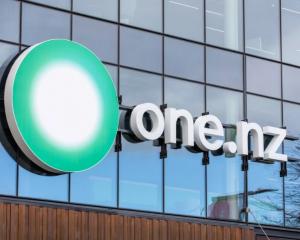
Larger cap stocks, such as Contact Energy, Fletcher Building, Sky City and The Warehouse, should be regarded as core holdings in a portfolio of quality companies, Craigs Investment Partners broker Chris Timms says.
But there were others that featured as Craigs' preferred quality picks in New Zealand.
New Zealand quality
At the top of the list was Ryman Healthcare.
The company had a strong business model and management. It provided "exceptional" dividend growth.
Port of Tauranga was New Zealand's leading export port, servicing the central North Island forestry estates.
Fisher & Paykel Healthcare produced quality products and had high growth potential.
A high dollar was sometimes a problem.
Auckland International Airport was leveraged to tourism.
It had a large property portfolio and was strategically placed.
At number five on his list of quality stocks was TrustPower - a 100% renewable energy provider, the fifth-largest generator in New Zealand and having a relatively loyal customer base.
Australian quality
As in New Zealand, there were many large cap stocks in Australia that were worthy of inclusion as core holdings.
But Mr Timms singled out five "buy first" quality stocks to include in an Australian portfolio.
Mining giant BHP was at the top.
It was the world's leading diversified resources company.
It had a strong balance sheet and offered exposure to commodities, as well as oil and gas.
AGL Energy was the most defensive of the major energy and utility stocks.
The company had operations in a range of areas and stood to benefit from "green energy" initiatives.
Woolworths had strong competition from Metcash and Wesfarmers but it remained the clear leader and highest-quality operator of supermarkets.
QBE Insurance was conservatively managed, with more than 80% of its earnings coming from offshore.
The Commonwealth Bank of Australia was the highest quality of the major banks.
The banking sector was of central importance to the Australian economy, Mr Timms said.
Global quality
The mix of global funds selected by Craigs provided diversified exposure to global markets with a mix of approaches - value, absolute return and income growth.
An evenly weighted allocation to those funds would have a 31% weighting to the United States, 30% to the United Kingdom, 18% to Europe, 6% to Japan and 15% to emerging markets.
RIT Capital provided a global portfolio across a range of assets.
It was actively managed with the goal of delivering equity-like returns with a lower degree of volatility.
Bankers was a global equity portfolio focused on delivering income and income growth.
British Empire & Securities offered a value approach.
It held a portfolio of primarily European-listed funds purchased at discounts to net asset value.
City of London had a portfolio of UK blue chip companies with a few European stocks.
It had 42 years of dividend growth.
The last global fund chosen by Mr Timms was Dow Jones ETF, an index fund that held the 30 US stocks in the Dow Jones Industrials Average.
Growth
For growth stocks, Mr Timms picked Seek, JB Hi-Fi and NZX.
Seek was the leader in the online employment market in Australia and New Zealand.
JB was a well-managed electronics retailer which continued to open new stores and expand its footprint.
NZX had monopolistic attributes.
Emerging markets
"These markets are in the spotlight at present, which we find unnerving.
"However, we are believers in the long-term story.
"These economies are growing at almost double the rate of the developed world, have far better debt profiles and trade accounts and high levels of foreign reserves."
The funds favoured by Craigs provided diversified or specific access to emerging markets.
Templeton Emerging Markets was Craigs' favoured emerging markets fund.
Investors needed to be aware that the managers backed themselves and held a concentrated portfolio.
There were natural risks that came with investing in emerging markets.
Other favoured emerging market funds were: Vanguard Emerging Markets ETF for people who wanted broad, low-cost, index fund exposure to emerging markets.
The fund held 800 companies from 26 markets.
JPM China for those who wanted access to the driving force in emerging markets.
JPM India. With the focus on China, the size and potential of India could be overlooked.
Another very high-risk exposure.
Wisdom Tree Emerging Markets Equity Income held the 200 highest-yielding stocks from across a selected universe of emerging market stocks.
JPM Emerging Markets, an actively managed emerging markets fund.
Low payout ratios
New Zealand and Australia leaders and mid-cap.
A payout ratio was the percentage of earnings that a company distributed to shareholders as a dividend each year.
Mr Timms said companies that retained a higher proportion of their earnings had greater potential to deliver earnings and dividend growth.
The stocks he selected provided "reasonable dividend yields" but delivered with a payout ratio below 65%.
Those companies offered greater potential as income-growth stocks over the longer term.
The top 10 were:
Ebos (yield 6.9%, payout ratio 62%); QBE (5.9%, 61%); Mainfreight (5.1%, 45%); Delegat's Group (5%, 26%); Sky Television (5%, 62%); Orica (4%, 56%); Ramsay Healthcare (3.9%, 52%); Transfield (3.4%, 35%); Ryman Healthcare (3.1%, 50%); NZX (2.8%, 60%).
High interest cover
In February 2009, when the global financial crisis was at its peak, balance-sheet strength was the only issue that mattered to investors, Mr Timms said.
"It is an undeniable reality that if the financial crisis has lasted another six months many more companies would have failed."
In times of stress, balance-sheet strength became very important.
The stocks picked by Craigs had high level of interest cover (operating earnings over interest expense).
With low debt levels relative to their earning power, those companies were relatively well placed to weather tough financial conditions.
As a benchmark, interest cover ratios of three times to four times were common across leading companies.
Top on his list were:
CSL (260 times interest cover, the company had virtually no debt); BHP (33.5 times, debt represented 13% of equity); Newcrest (28.4 times, 2%); Cochlear (24.7 times, 30%), Origin Energy (20.2 times, no debt); The Warehouse (18.3 times, 14%); Ryman (13.7 times, 32%); F&P Healthcare (13.2 times, 65%).
Takeover targets
Buying a stock only because it could potentially be a takeover target at some point was a high-risk strategy, as such an outcome might never occur.
However, the potential could be a nice "add-on" to the fundamental appeal of a stock, Mr Timms said.
His takeover targets (listed alphabetically) are:Contact Energy - Origin Energy, the majority owner, had made previous bids.
Fosters - With Lion Nathan gone, buyers looking for strong market brands will have to consider Fosters.
Freightways - Broadly owned, astute operator, strong market position.
IOOF and Perpetual - Niche fund managers are potential targets in superannuation sector consolidation.
Orica - Strong market position in explosives and "tidy" exposure to mining.
Strong balance sheet.
Santos - Has significant coal seam gas reserves arguably undervalued by the market.
The Warehouse - Woolworths and Foodstuffs have both indicated interest.
Tower - Might see corporate interest, given sector outlook is improving.












